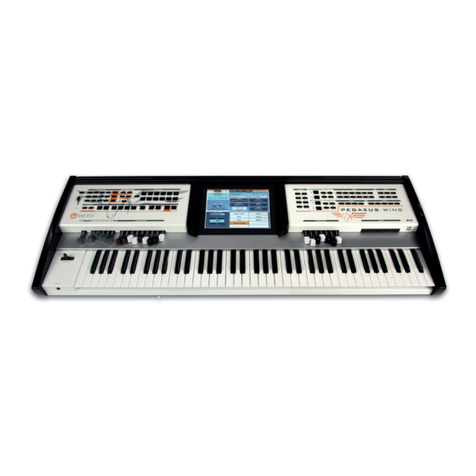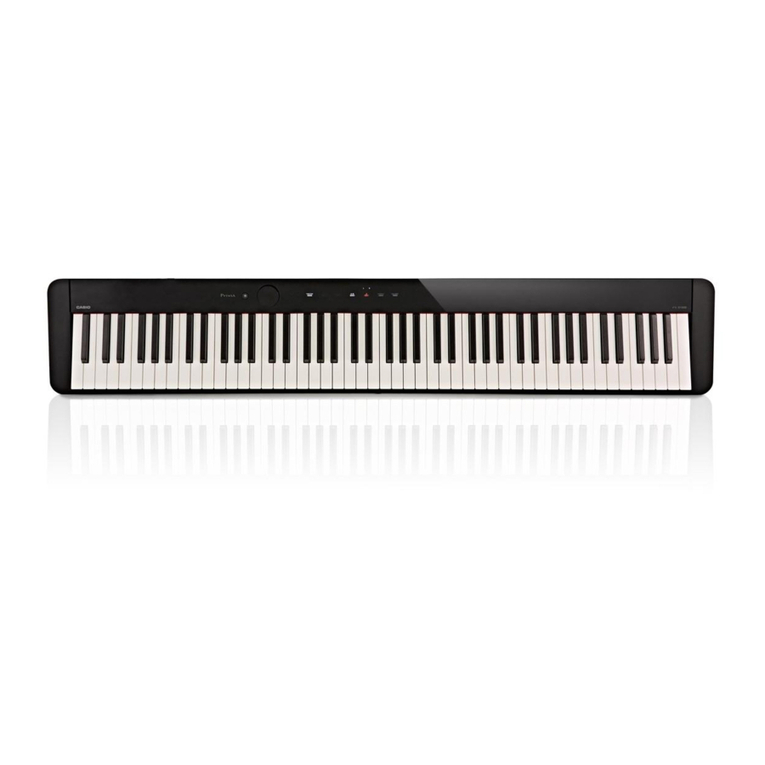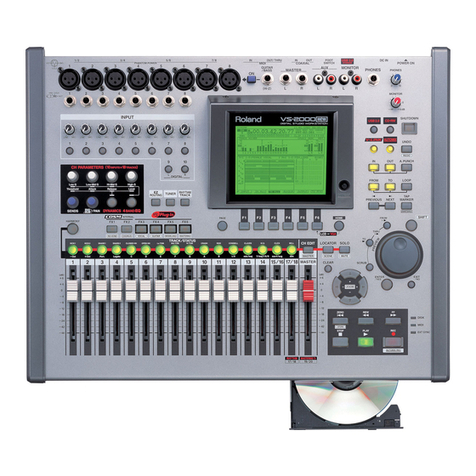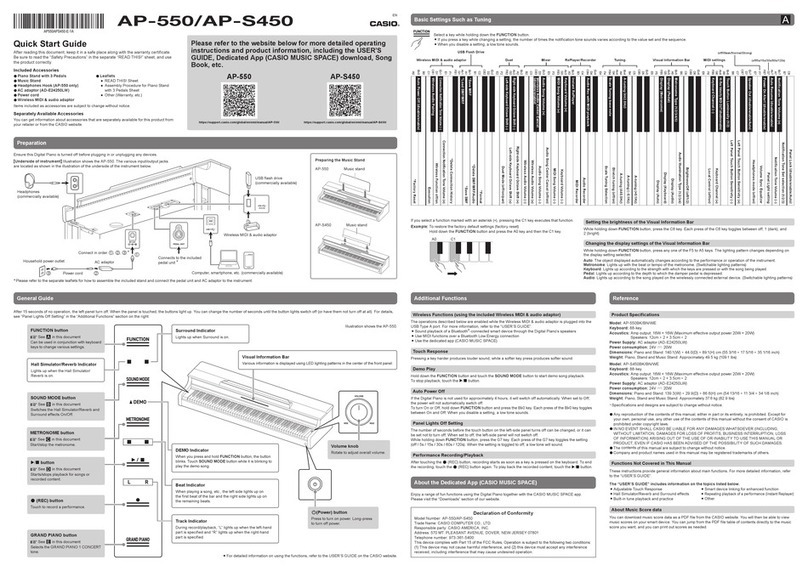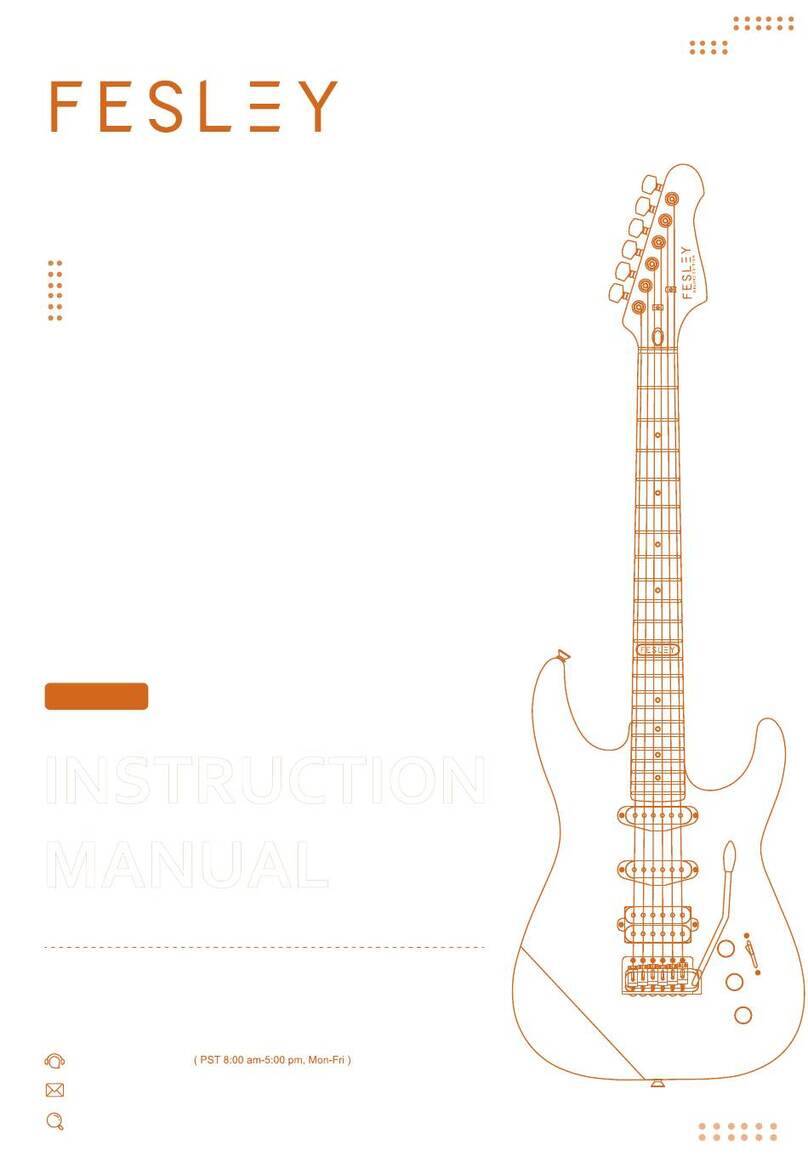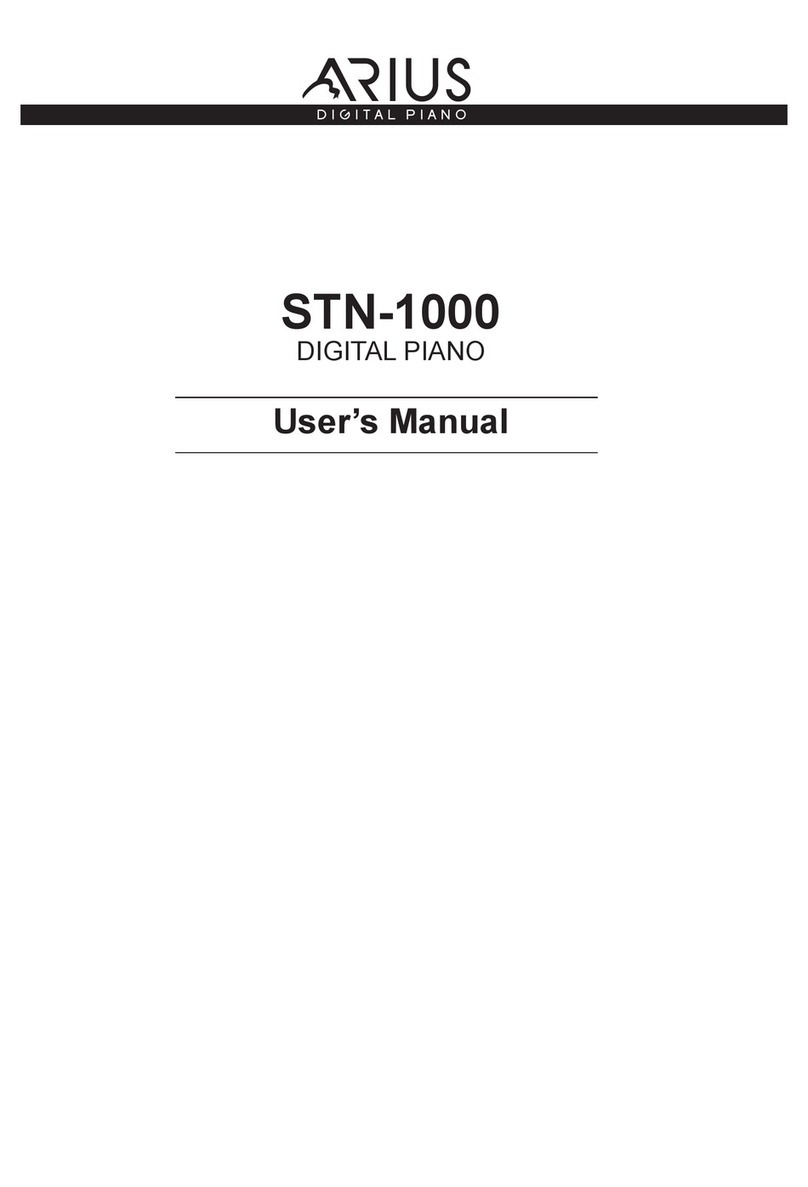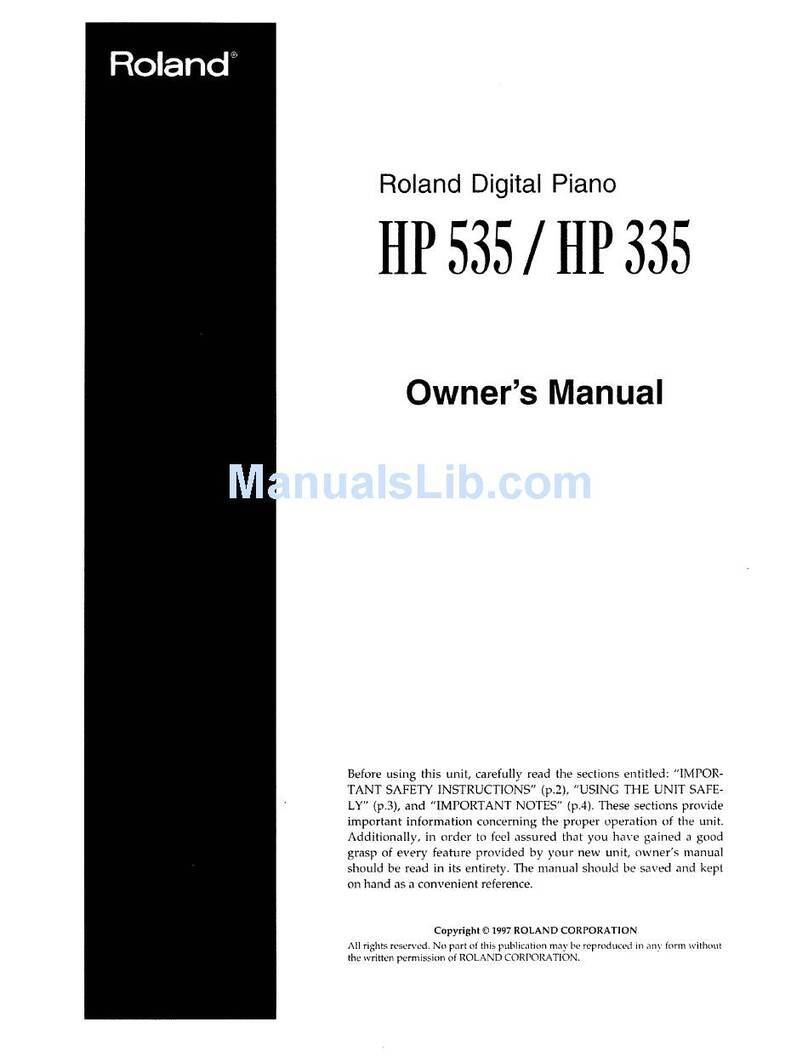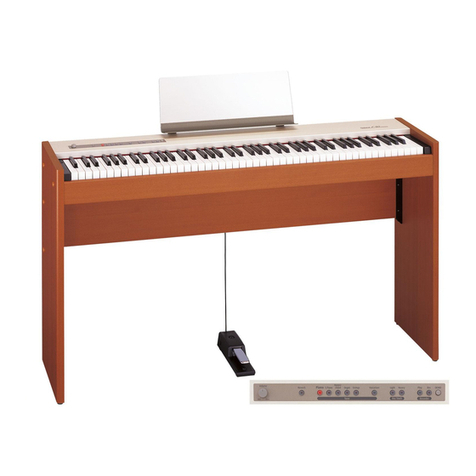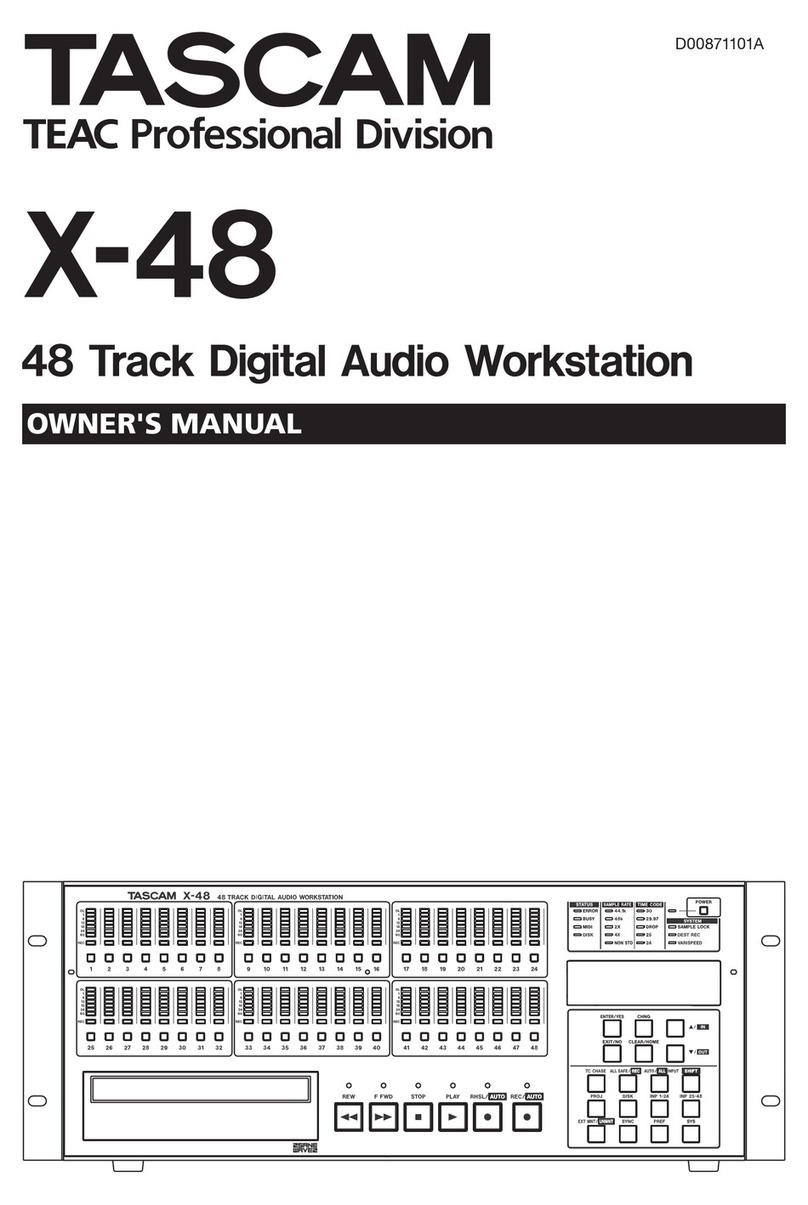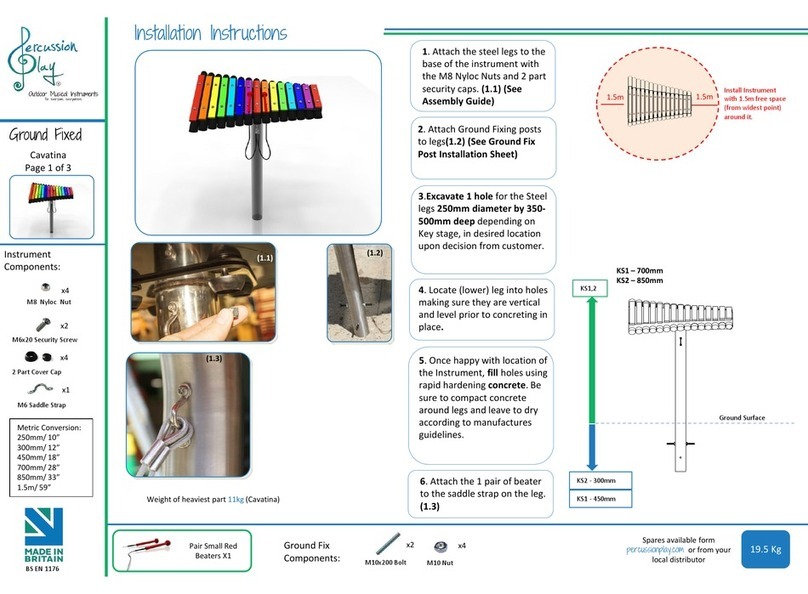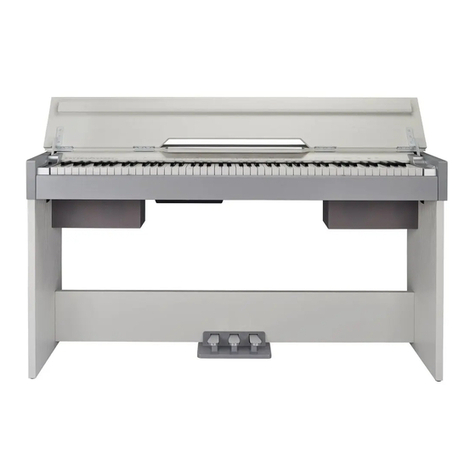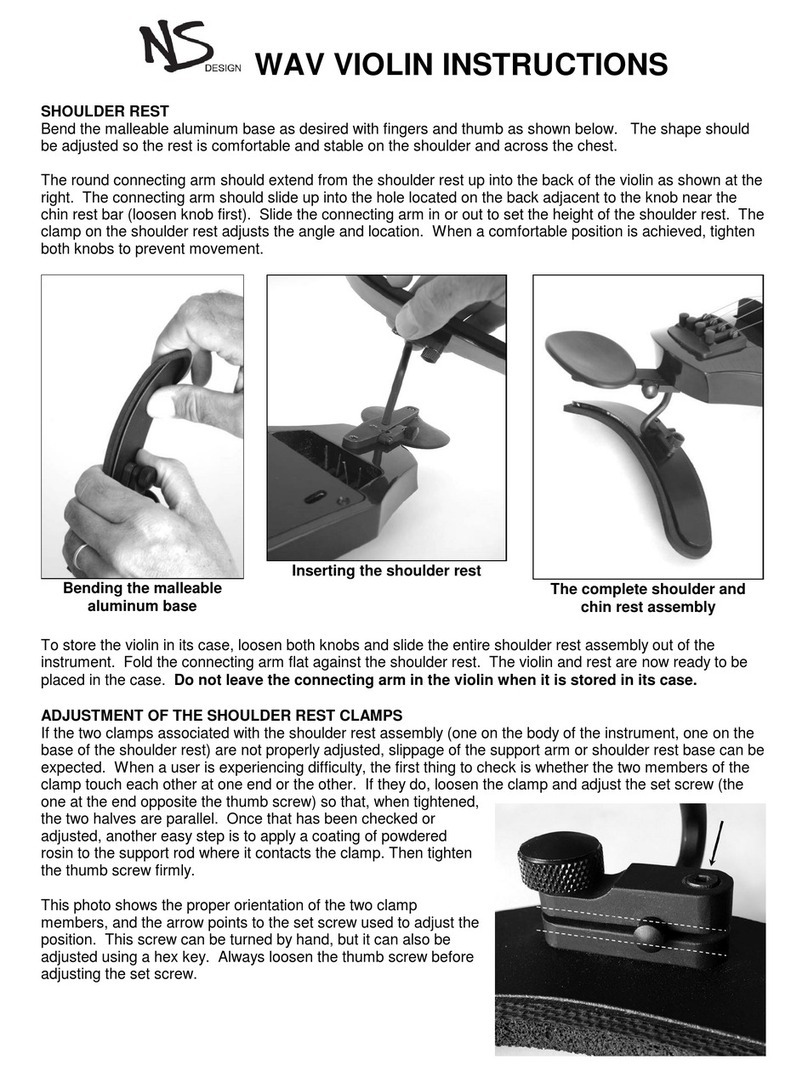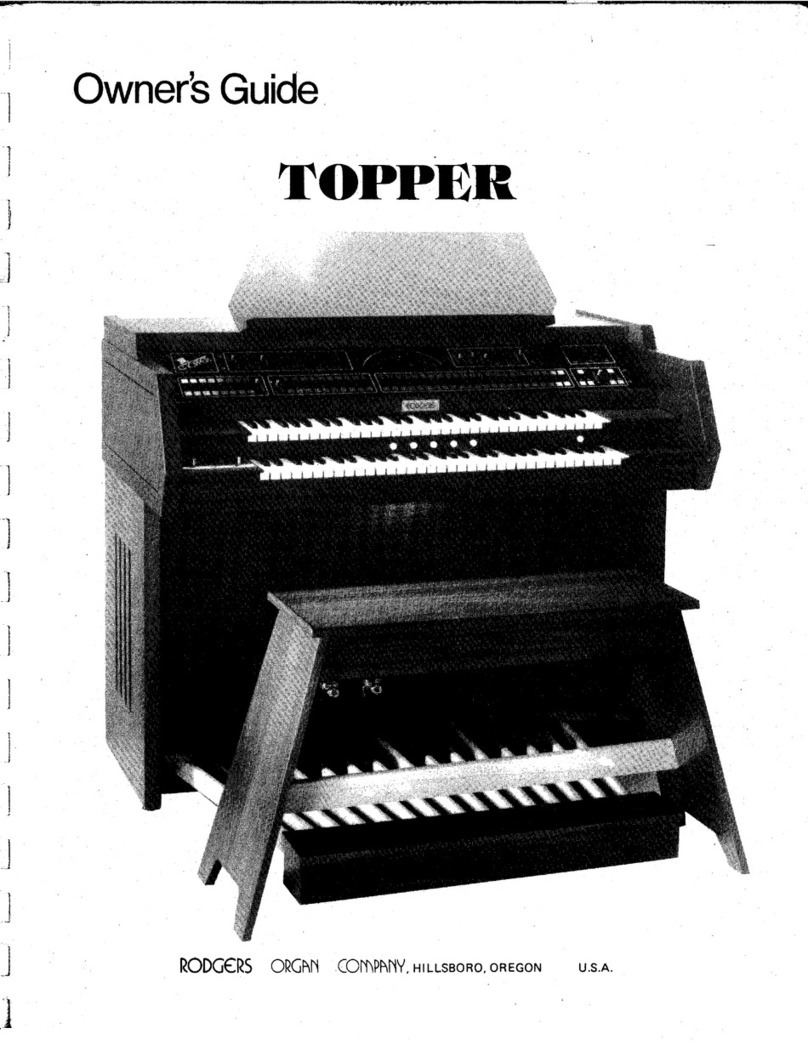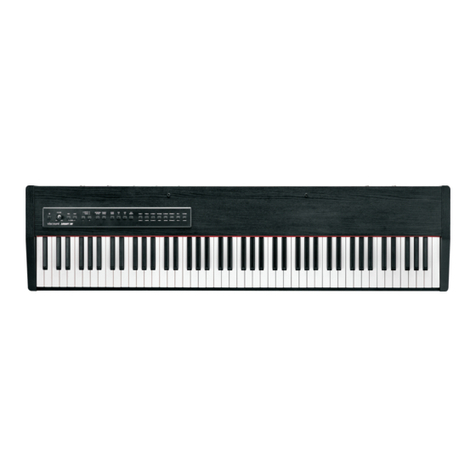Spector Performer Series User manual

www.spectorbass.com
Owner’s Manual
Congratulations on your purchase of a new Spector Bass and welcome to the
Spector Family! In this brief manual, we hope to provide you with the
information you will need to get the most out of your new Spector
instrument and keep it playing like new for years to come. Should you have
any questions about something not covered in these pages, feel free to
contact us at:
Spector Musical Instruments
3094 Route 28
Shokan, NY 12481
www.spectorbass.com
@spectorbass
Spector Bass Warranty
Spector Musical Instruments warrants this instrument to be free from defects
in materials and workmanship. All Spector Performer Series Basses are
covered by a 3 Year Warranty. Legend, NS Pulse, NS Dimension, and NS Ethos
Series Basses are covered by a 5 Year Warranty. All Euro Series and all USA
Series are covered by a Lifetime Limited Warranty when purchased from an
authorized Spector Musical Instruments Dealer, subject to the limitations set
forth herein. This warranty applies only to the original retail purchaser when
this instrument is purchased from an authorized Spector Musical Instruments
Dealer, and requires the purchaser to supply a copy of the original proof of
purchase (original sales receipt with the instrument serial number and their
name indicated as the purchaser thereon) at the time service is requested.
Electronic components, tuning machines, and case hardware are warranted
for a period of one year from the date of original purchase.
Spector is proud to offer quality instruments for all bassists.

www.spectorbass.com
Spector Electronics Configurations
Spector offers a wide variety of pickup and preamp combinations to suit
any player’s style. For specifics on your model Spector Bass, please consult
the chart below to determine the corresponding diagram to better
understand the layout of your instrument.
Diagram A Diagram B
Diagram C Diagram D
BASS
TREBLE
P/U SELECT

www.spectorbass.com
Spector Bass
Strings
Neck Pickup
Bridge Pickup
Pre-Amp
Diagram
Performer Series
4
Spector P
Spector J
n/a
A
Legend Standard Series
4-5
Spector P
Spector J
Spector +/- 12dB
B
Legend Classic Series
4-5-6
Bartolini P or
Humbucker
Bartolini J or
Humbucker
Spector TonePump Jr
B
Legend Neck Thru Series
4-5
Aguilar P or DCB
Aguilar J or DCB
Aguilar OBP-2
B
NS Pulse Series
4-5-6
EMG-P
EMG-J
Spector TonePump Jr
B
NS Ethos Series
4-5
Aguilar P or DCB
Aguilar J or DCB
Aguilar OBP-2
B
NS Dimension Series
4-5
Fishman Fluence
Fishman Fluence
Fishman Fluence
C
Bantam Series
4-5
EMG-35DC
EMG-35DC
EMG BTS
D
EuroBolt Series
4-5
Aguilar P or DCB
Aguilar J or DCB
Aguilar OBP-2
B
Euro LX Series
4-5-6
EMG-P or DC
EMG-J or DC
Spector TonePump Jr
B
Euro LT Series
4-5-6
Bartolini P or
Humbucker
Bartolini J or
Humbucker
Modified Darkglass
Tone Capsule
B
Euro Classic Series
4-5
EMG-P or EMG-J
EMG-J
EMG BTS
C
NS-2
4
EMG-P
EMG-J
HAZ 9V
C
NS-4
4
EMG-35DC
EMG-35DC
HAZ 18V
D
NS-5XL
5
EMG-40DC
EMG-40DC
HAZ 18V
D
NS-6XL
6
EMG-45DC
EMG-45DC
HAZ 18V
D
Forte 4
4
Aguilar P
Aguilar J
Aguilar OBP-2
C
Forte 5, Forte 6
5-6
Aguilar DCB
Aguilar DCB
Aguilar OBP-2
C

www.spectorbass.com
Pickups and Pre-amps
Passive Pickups
•
Performer & Legend Standard -
Designed by Spector, a passive, high
impedance pickup offers full output
characteristics combined with a
broad frequency response and clear
tone.
•
Custom Bartolini -
Designedand
builtbyBartolini in their San Luis
Obispo, CA facility. This passive
pickup has a big sound, traditional
feel, wide frequency bandwidth,
“punchy” tone, and hum cancelling
design.
•
Aguilar 4P/J-
HC –Designed and built
by Aguilar in New York City. This well-
balanced pickup set provides a flexible
array of tones, whether using each
pickup alone or in combination. Now
you can get the thunderous lows of the
neck pickup or the midrange cut of the
bridge –or both –without 60 cycle
hum!
•
Aguilar DCB
- Designed and built by
Aguilar in New York City. The DCB®
pickups use a dual-ceramic bar design
to capture all the detail and character
of your tone. The pickup’s uniform
magnetic field ensures that no
information is lost, making this a great
pickup for dynamic playing styles. Full-
bodied tone with a rich sustain
characterizes the sound of the DCB
series, bringing out the best qualities in
any instrument.
Active Pickups
•
EMG-P and EMG-J - The active pickup
that changed the bass pickup business
in the late ‘70’s. Voiced after the
original P® design with a preamp built
into the pickup for extended frequency
response, high output, and noise free
operation. The EMG-J offers a similar
voicing to the original J with the same
benefits of the EMG design.
•
EMG-35DC, EMG-40DC & EMG-45DC -
These
are part of the EMG Extended
Series. The DC dual coil features side-
by-side coils that widen the magnetic
aperture delivering a deep, full low
end with slightly accentuated
midrange.
•
Fishman Fluence - The Fluence Bass
Soapbar pickup provides revolutionary
Fluence Multi-Voice performance,
dynamic range, and articulation. Based
on Fishman’s convention-disrupting
Fluence Core technology, a single bass
pickup can now produce multiple
timbres and sounds, each untethered
from the other. Original and totally re-
imagined, Fluence Multi-Voice pickups
for electric bass are free from the hum,
noise and frustrating inductance issues
that plague even the most coveted wire-
wound pickups, revealing pure,
uncorrupted bass tone.
Fluence Bass Soapbar Pickup Voicings:
Voice 1 (Passive): Classic, fat and round
Voice 2 (Active): Full frequency, full
dynamics
Voice 2 (Active with mid contour): Funk,
Hi-Fi scooped
Single Coil Mode: Same voices as above
but with Jazz Bass string window.

www.spectorbass.com
Pre-amps
•
EMG-BTS -
Active Bass and Treble
Control features two controls that
can independently boost or cut both
bass and treble frequencies up to
12dB. FLAT (no cut or boost of
frequency) on the controls is in the
center, detented (a little “click”)
position. In addition, a set of DIP
switches mounted on the main
circuit board allow you to select
among 4 widely different center
frequencies ranging from the high
midrange to treble region (2100,
3500, 4500, and 7000Hz).
•
Spector +/- 12dB
–This circuit
appears in our Legend Standard
instruments. We worked with our
manufacturing partners in Asia to
provide a versatile and useful pre-
amp that is remiscient of our classic
Spector sound, but with slightly less
gain and higher headroom.
•
Aguilar OBP-2
The OBP-2 was
designed to give bassists fat tone
while being small enough to fit
into tight control cavities. Wire
this preamp with one 9-volt
battery and it will fit into just
about any instrument. With +/-
18dB of boost and cut at 40Hz and
+/- 16dB of treble boost and cut at
6.5 kHz you have can emphasize
just the right frequencies to make
your bass sound great in any mix.
•
TonePump & TonePump Jr
. -
The
Spector TonePump debuted in our
Euro models in the early 2000’s. This
low output impedance design
is meant to provide a musical and useful
tones at nearly any setting. The 2-band
EQ is continuously variable, meaning the
frequency spectrum changes as the
knobs are adjusted. There are no center
detents to determine a “flat” sound,
rather this circuit allows players to
determine their own “normal” tone and
enhance the treble & bass frequencies
from there. This pre-amp design is also
very hot, offering up to 18dB of boost in
the TonePump and 12dB of boost in the
TonePump Jr.
•
Modified Darkglass Tone Capsule -
Darkglass’ Tone Capsule has quickly
become a favorite among modern
bass players. Spector worked directly
with Darkglass’ engineers in Finland
to modify their Tone Capsule to
better suit our Euro LT basses. The
result is a versatile pre-amp that
allows for both aggressive and mild
tones that pair perfectly with our
custom Bartolini pickups.
•
The
Original Spector Pre-amp
or
HAZ Pre-amp
–This classic circuit
features active bass and treble
controls with the ability to cut and
boost, providing the player with
complete tonal flexibility. The
original circuit was a 9v circuit and is
still found to this day on the NS-2.
This is the circuit heard on countless
recordings since the late 1970s. The
18v Spector/HAZ circuit is an
updated version of the classic with
added headroom and clarity. These
cherished circuits are only available
in our USA Series instruments
.

www.spectorbass.com
The Spector
Bridge
How to Adjust It:
The Spector Locking Bridge is found on all basses with the exception of the
Performer Series & NS Dimension Series. The design consideration is that
while this bridge is sophisticated, it is actually very simple and easy to
adjust. Another profound benefit of the Spector Locking Bridge isthatit
locks. Youcannot adjustit, until you unlock it. Once adjusted, lock it and it
will stay where you put it. To adjust, leave the strings on the bass and tuned
to normal pitch. Loosen the set screw on side of bridge with Allen wrench.
Using same Allen wrench as above, adjust height of each string saddle as
needed to suit your playing style. Adjust the intonation of each bridge
saddle by moving the saddle away from the neck (if the higher register
notes are playing sharp) or toward neck (if the higher notes are playing
flat) as needed. For optimum performance, each of the saddles should be
tilted back toward the ball end of the string at the same angle as the
headstock tilt (but opposite in direction). Tighten set screw on side of
bridge and now the saddles will stay in place even when strings are
changed. This solid contact also adds to the overall sustain and tone of the
Spector Bass.
Spector String Spacing Specifications
Inquiring minds want to know, so in response to many requests:
Scale Length
Nut Width
At 12th Fret
At Bridge
Fingerboard Radius
4 String 34”
1.645”
2.065”
.75”
16”
5 String 35”
1.84”
2.415”
.66”
16”
6 String 35”
2.19”
3.015”
.66”
16”

www.spectorbass.com
Preventative Maintenance
“High Gloss” Finishes:
Spector “High Gloss” Finishes are
practically maintenance free. Simply
clean them occasionally with a good
quality guitar polish available from
several manufacturers of guitar and
bass accessories. If the back of the
neck (which is a matte finish) should
require cleaning, we recommend
Lemon Oil. As far as a “polishing
cloth”, a clean, 100% cotton tee-shirt
(as long as it’s clean, older is even
better-they get softer with age and
repeated washings) is your best bet.
Besides, recycling helps the
environment!
Spector “Matte”or “Satin” Finishes:
It’s a great idea to regularly clean
and protect the neck and body of
your Spector Bass with a good
quality microfiber cloth. This
should remove dirt and oils from
the surface of your instrument. Do
not use any cleaners that contain
polish or oil, as these will cause
your finish to appear glossy. If you
need to do a deeper cleaning of
your instrument, please use a
cleaner that is safe for “matte” or
“satin” finishes.
Fingerboards:
For Pau Ferro or Rosewood
fingerboard, use Lemon Oil. This will
clean and protect your fingerboard,
replenishing the oils that the
fingerboard, protecting the wood
from excessive dryness. For Maple
fingerboards, treat similarly to a
“Matte” or “Satin” finish, as stated
earlier.
Hot-Cold-Dry-Damp:
In most areas, the spring and
summer months usually bring with
them humidity. While basses (and
other musical instruments made of
wood) like to have some humidity,
too much is not a good thing. You
wouldn’t leave your pet in your
sweltering car in the summer heat,
don’t do it to your Spector bass.
Heating systems in Winter remove
moisture from your home and your
bass! We highly recommend a
humidifier for you and your bass, at
least for the room in which you
store your instrument. At the very
least, store your instrument in its
case, away from the heating ducts.
In general, basses like to be where
you like to be: 70 degrees and
moderate humidity.

www.spectorbass.com
The Truss Rod - What It
Is What It Does
How to Adjust It
If thinking about removing that little plate and
taking out an Allen wrench makes you feel a bit
faint, please see your local guitar shop (where you
bought your Spector) and have them help you
out. All Spector Basses have an adjustable rod
located in the neck which runs the length of the
neck. The truss rod opposes the force exerted by
the tuning of the strings and keeps the neck from
warping under that pressure.
Many of our basses also have graphite rods that
run parallel to the truss rod and act to evenly
distribute the forces of the truss rod. If “sighting
down” the neck indicates that there is a warp or
“dip” in the neck, the adjusting nut should be
tightened. If there is a reverse warp or “hump” in
the neck, the nut needs to be loosened.
When in doubt, please consult with your local
Spector dealer or qualified guitar repair shop!
CAUTION: There are very extreme forces involved in
basses and bass
strings. BE SURE TO LOOSEN STRINGS
before attempting to tighten the truss rod!
IMPORTANT: If you have ANY question
about your comfort level in doing neck
adjustments on any instruments, we
highly recommend that you return to
your Spector Dealer and ask them for
assistance.
VERY IMPORTANT:Truss rods can be
tightened. They can also be can be
tightened too far! When in doubt, seek
professional advice.
This manual suits for next models
18
Table of contents
